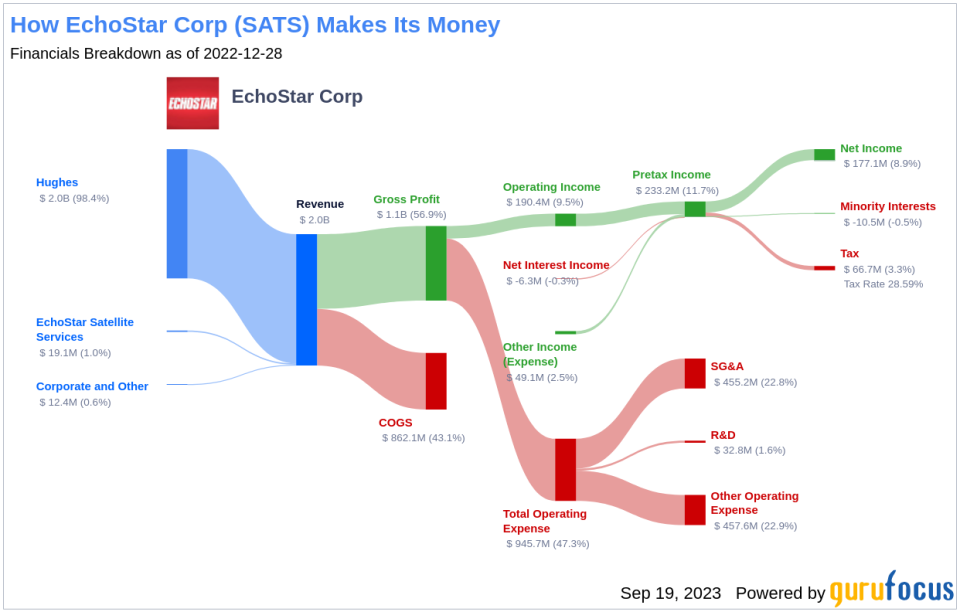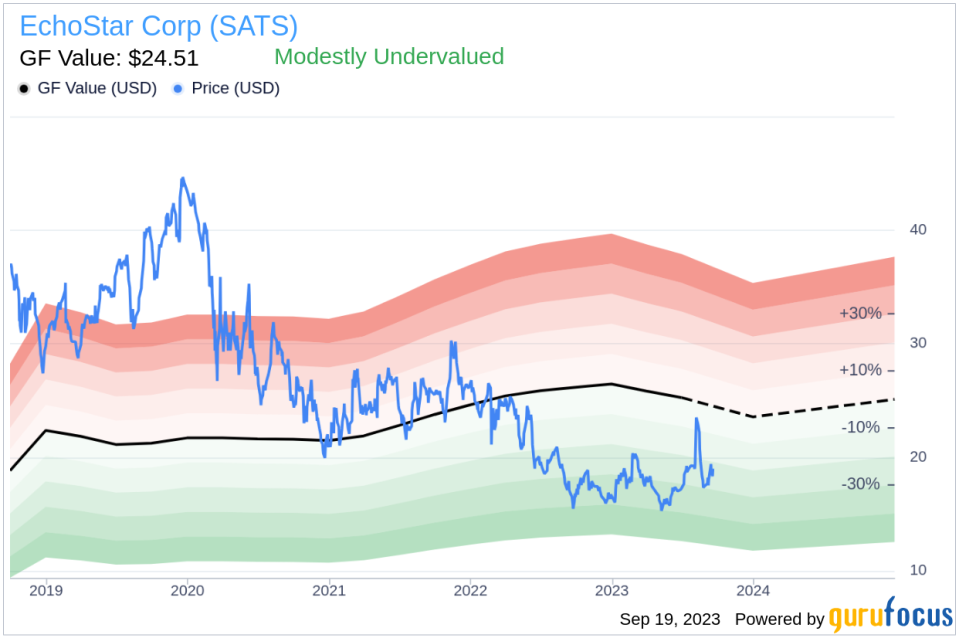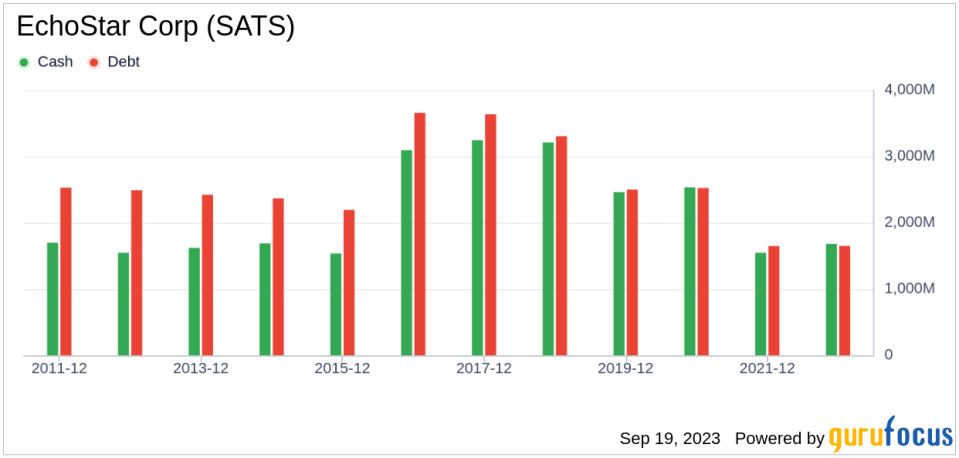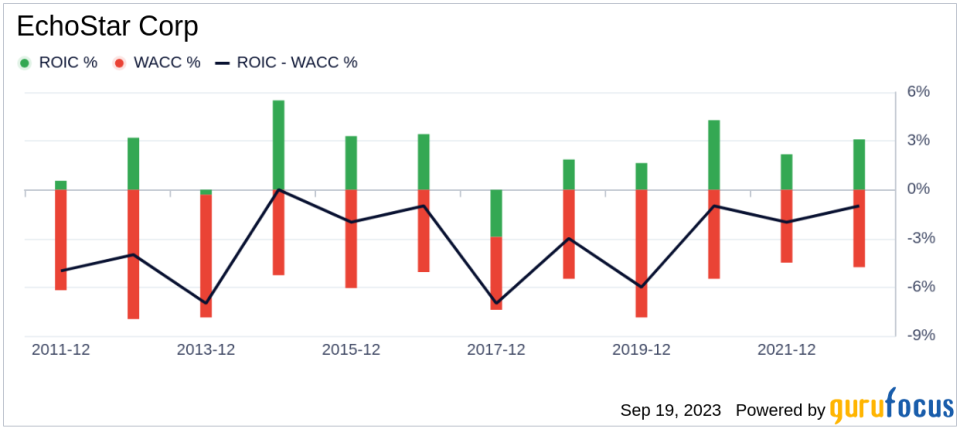Unveiling EchoStar (SATS)'s Value: Is It Really Priced Right? A Comprehensive Guide
EchoStar Corp (NASDAQ:SATS) has recently seen a daily gain of 3.82%, and a 3-month gain of 12.33%. With an Earnings Per Share (EPS) (EPS) of 1.34, the question arises: is the stock modestly undervalued? This article aims to answer this question through a deep dive into EchoStar's valuation, financial strength, profitability, and growth. We encourage you to read on for a comprehensive analysis.
Company Introduction
EchoStar Corporation is a leading provider of broadband technology and video delivery solutions. The company operates in two segments - Hughes, which provides satellite broadband Internet access to North American customers, and EchoStar Satellite Services, which uses owned and leased in-orbit satellites to provide services primarily to DISH Network. As of September 19, 2023, EchoStar (NASDAQ:SATS) is trading at $19.04 per share, with a market cap of $1.60 billion. The GF Value, a proprietary measure of a stock's intrinsic value, is estimated at $24.51, suggesting that the stock may be modestly undervalued.
Understanding the GF Value
The GF Value represents the current intrinsic value of a stock, calculated considering historical trading multiples, a GuruFocus adjustment factor based on past performance and growth, and future business performance estimates. The GF Value Line on our summary page provides an overview of the fair trading value of the stock. If the stock price is significantly above the GF Value Line, it is overvalued and its future return is likely to be poor. Conversely, if it is significantly below the GF Value Line, its future return will likely be higher.
According to GuruFocus' valuation method, EchoStar (NASDAQ:SATS) appears to be modestly undervalued. As EchoStar is relatively undervalued, the long-term return of its stock is likely to be higher than its business growth.
Evaluating Financial Strength
Investing in companies with poor financial strength has a higher risk of permanent loss of capital. Thus, it is important to carefully review the financial strength of a company before deciding whether to buy its stock. Looking at the cash-to-debt ratio and interest coverage is a great starting point for understanding the financial strength of a company. EchoStar has a cash-to-debt ratio of 1.16, which is worse than 52.88% of 2375 companies in the Hardware industry. GuruFocus ranks the overall financial strength of EchoStar at 6 out of 10, which indicates that the financial strength of EchoStar is fair.
Profitability and Growth
Investing in profitable companies carries less risk, especially in companies that have demonstrated consistent profitability over the long term. Typically, a company with high profit margins offers better performance potential than a company with low profit margins. EchoStar has been profitable 7 years over the past 10 years. During the past 12 months, the company had revenues of $1.90 billion and Earnings Per Share (EPS) of $1.34. Its operating margin of 9.23% is better than 73.93% of 2447 companies in the Hardware industry. Overall, GuruFocus ranks EchoStar's profitability as fair.
One of the most important factors in the valuation of a company is growth. Long-term stock performance is closely correlated with growth according to GuruFocus research. Companies that grow faster create more value for shareholders, especially if that growth is profitable. The average annual revenue growth of EchoStar is 6.8%, which ranks better than 57.47% of 2337 companies in the Hardware industry. The 3-year average EBITDA growth is 4.9%, which ranks worse than 60.98% of 1963 companies in the Hardware industry.
Comparing ROIC and WACC
One can also evaluate a company's profitability by comparing its return on invested capital (ROIC) to its weighted average cost of capital (WACC). Return on invested capital (ROIC) measures how well a company generates cash flow relative to the capital it has invested in its business. The weighted average cost of capital (WACC) is the rate that a company is expected to pay on average to all its security holders to finance its assets. If the return on invested capital exceeds the weighted average cost of capital, the company is likely creating value for its shareholders. During the past 12 months, EchoStar's ROIC is 2.57 while its WACC came in at 5.56.
Conclusion
In conclusion, the stock of EchoStar (NASDAQ:SATS) appears to be modestly undervalued. The company's financial condition is fair and its profitability is fair. Its growth ranks worse than 60.98% of 1963 companies in the Hardware industry. To learn more about EchoStar stock, you can check out its 30-Year Financials here.
To find out the high quality companies that may deliver above average returns, please check out GuruFocus High Quality Low Capex Screener.
This article first appeared on GuruFocus.




